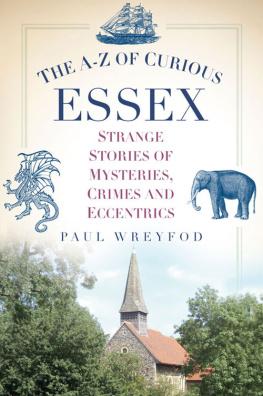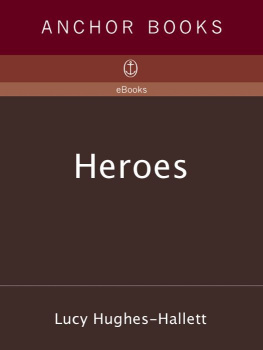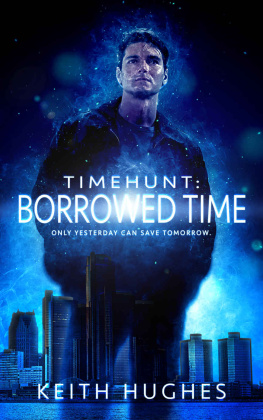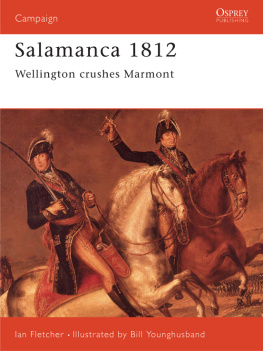First published in Great Britain in 2016 by
Pen & Sword Maritime
an imprint of
Pen & Sword Books Ltd
47 Church Street
Barnsley
South Yorkshire
S70 2AS
Copyright Ben Hughes 2016
ISBN: 978-1-47382-364-8
PDF ISBN: 978-1-47388-111-2
EPUB ISBN: 978-1-47388-110-5
PRC ISBN: 978-1-47388-109-9
The right of Ben Hughes to be identified as Author of this Work has been asserted by him in accordance with the Copyright, Designs and Patents Act 1988.
A CIP catalogue record for this book is available from the British Library
All rights reserved. No part of this book may be reproduced or transmitted in any form or by any means, electronic or mechanical including photocopying, recording or by any information storage and retrieval system, without permission from the Publisher in writing.
Typeset in 11/13 Ehrhardt by Replika Press Pvt Ltd, India
Printed in the UK by CPI UK
Pen & Sword Books Ltd incorporates the imprints of Pen & Sword Archaeology, Atlas, Aviation, Battleground, Discovery, Family History, History, Maritime, Military, Naval, Politics, Railways, Select, Social History, Transport, True Crime and Claymore Press, Frontline Books, Leo Cooper, Praetorian Press, Remember When, Seaforth Publishing and Wharncliffe.
For a complete list of Pen & Sword titles please contact
PEN & SWORD BOOKS LIMITED
47 Church Street, Barnsley, South Yorkshire, S70 2AS, England
E-mail:
Website: www.pen-and-sword.co.uk
Contents
List of Illustrations
Captain David Porter. US Naval Academy Museum, Annapolis, Maryland.
USS Essex. Peabody Essex Museum, Salem, Massachusetts.
David Glasgow Farragut. National Portrait Gallery, Washington.
Commodore John Downes. Canton Historical Society, Massachusetts.
The Liberty of the Subject [the Press Gang]. National Maritime Museum, Greenwich, London.
The Essex capturing the Alert.
Capture of La Nride by HMS Phoebe. National Maritime Museum, Greenwich.
Captain James Hillyar. National Maritime Museum, Greenwich.
Allen F. Gardiner.
Signatures of Hillyar and Ingram. Taken from the Phoebes Muster Roll, ADM 36/16809, National Archives, Kew.
Portsmouth Point. National Maritime Museum, Greenwich.
A Marine & Seaman fishing off the Anchor on board the Pallas in Senegal Road, jany 1795. National Maritime Museum, Greenwich.
Saturday Night at Sea. National Maritime Museum, Greenwich.
A nineteenth-century map of Rio de Janeiro.
Slave Market in Rio de Janeiro, Brazil, c.1824.
Vista de la Bahia de Valparaiso. 1830. Museo Histrico Nacional de Chile.
Lima, Plaza de Armas. 1854.
Juan Fernandez Island.
Chile. 1744.
At daylight we saw a shoal of sperm whales. New Bedford Whaling Museum, Massachusetts.
Map of the Galapagos Islands. 1684.
Mouina. Chief Warrior of the Tayehs [sic].
Marquesan War Canoe.
Commodore Porter off Nuka Hiva.
USS Essex vs HMSs Phoebe and Cherub.
View of Valparaiso Bay. 2015. Authors collection.
William Morgans General Service Medal. DNW Auctioneers website. http://www.dnw.co.uk/
Masters Log Book, HMS Phoebe. Entry for 28 March 1814.
Memorial to the USS Essex, 2015. Authors collection.
Preface: Behind the Hyperbole
In the United States the story of USS Essexs commerce-raiding Pacific cruise, perhaps the most daring exploit of the War of 1812, is relatively well-known. The truth, however, has been blurred by the prevailing fabrications of President Madisons incumbent Republican government and Captain David Porters self-serving memoir released soon after his return. As the Bostonian would have it, his mission, despite ending in the capture of one of the United States few remaining men-of-war and the death or mutilation of over one-third of his 300-strong crew, was a spectacular success. His claims of crippling the British whaling industry, making a fortune from captured prizes and diverting the Royal Navys over-stretched resources on a year-long game of cat and mouse, do not stand up to close scrutiny, yet still form the basis of the generally-accepted narrative told to this day in the United States.
In Britain, Porters story and that of the men of HMS Phoebe who defeated him is virtually unknown. Embroiled in a 23-year-long fight to the death with Revolutionary and Napoleonic France, the war with America was considered a sideshow. It received little attention from contemporaries and was soon all but forgotten. In modern times Patrick OBrian revived the tale with his Jack Aubury novel, The Far Side of the World. Although a thin veil is cast over the story (USS Essex becomes USS Norfolk and the final showdown takes place off the Galapagos Islands rather than in Valparaiso Bay), OBrians tale largely sticks to the facts, but his efforts have since been overshadowed by a recent Hollywood adaptation. Master and Commander: the Far Side of the World is an imaginative and entertaining amalgamation of naval lore, fact and fiction in which Russell Crowe stalks the Pacific seeking a French frigate rather than an American one.
In Pursuit of the Essex: A Tale of Heroism and Hubris in the War of 1812 aims to tell the true story. Dedicating equal coverage to the hunter and the hunted without regard for reputation, it immerses the reader in the world of the British and American seamen who struggled for supremacy in the sunset years of the Age of Sail. In compiling the narrative, I have exploited a variety of British sources hitherto untapped by the historians who have covered the subject. The National Archives in Kew and the National Maritime Museum in Greenwich hold a host of primary accounts. The masters and captains logs of the British ships; secret coded journals intended for the High Lords Commissioners of the Admiralty; surgeons notebooks; ships musters and pay lists; courts martial records; and official correspondence, wills and personal letters penned by the chief protagonists all cast new light on the story as do several contemporary newspaper reports and the recently-published journal of Midshipman Allen Gardiner, an eyewitness to events from the moment HMS Phoebe left Portsmouth until the storys bloody denouement in Valparaiso Bay.
Acknowledgements
I would like to thank my editor, Rupert Harding, for his professionalism, kindness and encouragement; my parents, Dave and Jane Hughes and Stephen W. H. Duffy, author of Captain Blakeley and the Wasp: the Cruise of 1814, for their help in proof-reading and correcting the draft; and my wife and daughter, Vanessa and Emily Hughes, for their love and support.















